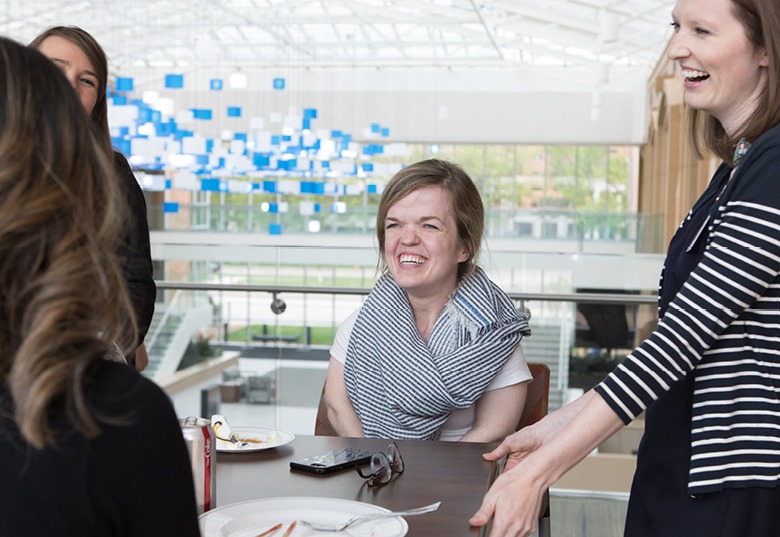Looking at the world around you, you see an abundance of sizes and statures. This holds true for ourselves as well. We can learn a great deal about humanity, our similarities and our differences by exploring a topic like height.
Human height is complex, and many factors affect how tall a person will grow. Height is not solely determined by genetics. Nutrition, connection to quality food and socioeconomic class all influence overall height.
Yet, for some, inherited genetic changes result in shorter height. Achondroplasia is one of many forms of dwarfism, occurring due to an inherited change in a person’s genetics.
Recently, Sanford Health dived deeper into human height at a seminar called “More Than Our Genetics: Stories of Dwarfism.” During the hourlong session in the Sanford Imagenetics Courtyard, Sanford Health laboratory director Robert Pyatt, Ph.D., and graduate student Andrea Schelhaas presented on:
- The genetics of human height
- Dwarfism
- Ethical concerns and perspectives
- A panel discussion with genetic experts and individuals with dwarfism
Rethinking differences
“We want to present the perspective not just on people with dwarfism, but we want to present on the spectrum of genetics around human height,” Dr. Pyatt said. “This is the story of all of us. This is humanity. We all have unique genetics. Sometimes, a person’s genetic changes are more visible, but it is a spectrum, a continuum.”
“There is what we think of as typical human height, but then there are variants,” said Schelhaas, who has achondroplasia. “I have been asked, ‘Oh, if you could be taller, would you?’ I have always answered this question with a no because it is my identity.”
She continued: “I don’t think it is a bad question to ask, but I do think it is an interesting question to explore. My height is something I value and has become cultural to me. I think it is a really cool thing for people to consider. There is value in variety, and people who are different value their differences. They may not see ‘disability’ as a bad thing, but rather a variant of normal.”
If you could, would you?
Sometimes the simplest questions are the hardest to answer. As genetics continues to advance and new technologies like gene editing become available, the question becomes: What do we do with the information?
“We must ask ourselves if this is a characteristic that needs to be corrected. While we have the technology, and gene editing may be great for more severe things that are life and death, do we always need to use it?” asked Dr. Pyatt.
Schelhaas added: “What conditions do we say we need to spend the time and money to correct? Where do we just leave nature to nature? This technology could be incredible for a family whose child has a deadly condition, but I do not think it is incredible to use gene editing for dwarfism.”
Dr. Pyatt described a recent study looking at people’s attitudes toward gene editing.
“The data came back stating that people are in support of using gene editing for conditions where people’s lives are at risk,” he said. “However, for everything else, just let people be people. Our goal is for people to see the variety from person to person, but also to see the similarities we all share.”
To learn more, call (605) 312-4363.
Read more
- Specialty clinic team serves as resource for little people
- Carrier test shows what genes parents may pass to kids
- Sanford genetics group shares benefits of custom kids’ care
…
Posted In Genetics, Innovations, News, Research
